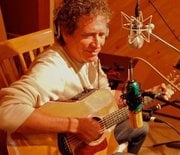Prosody
by Pat Pattison

Songs are your best teachers. I try to learn something from every song I hear. I try to see what's working, and why where the song connects with me where it makes me feel something. Then I look under the hood to see how it was put together, to extract tools that I can pass on to my students. I¹ve found great advice for writing in Aristotle's Poetics, where he says that every great work of art displays the same quality: Unity. Everything works together, everything in the work belongs and serves the purpose of the work.

Aristotle's may have been the first statement of Prosody: appropriate relationship between elements, whatever they may be: melody and words, chords and message, rhyme scheme and emotion, and many others. This has become the guiding principle in all my writing and teaching. In Leonard Bernstein's brilliant lecture series at Harvard in 1973, "The Unanswered Question," he shows how both music and poetry use the same fundamental principles. True indeed, for all the arts -- they are all fundamentally the same, just having different avenues of expression. Painting is different than song, but at the deepest level, they all use the same principles: tension/resolution, symmetry/asymmetry, etc. This has allowed me to teach poetry to musicians, using a language they know and love to explain how poems work: counter-pointing, rhythm, syncopation; constructing tonic, subdominant or dominant functions at the ends of lines.
They get it instantly, and it allows them to look at the other arts the same way. Paul Fussell's Poetic Meter and Poetic Form is a marvelous book, especially chapter three where he talks about poetic use of rhythm, and the emotional effects of various syncopations within a line of metered poetry. The relationship between lyric and melody works in the same way. The combined effect of the three works creates compelling reasons to have a huge toolbox to draw from, and to select and use these tools in support of the central idea of your song: its number of lines, lengths of lines, rhythm and phrasing of lines, rhyme scheme, and rhyme types. The structure you create acts as a film score would adding additional emotion to the message, even controlling how the listener perceives it.
Looking at writing through the eye glasses of Prosody focuses everything. It keeps the message and emotion central, and organizes the elements of structure to support them. I've learned a lot by reading and paying attention tot songs, and I've tried to pass those ideas along in my book Writing Better Lyrics, now in its second edition.
Pat Pattison is a professor at the famed Berklee College of Music in Boston, MA, USA. For more information on the USA Songwriting Competition, go to: http://www.songwriting.net

